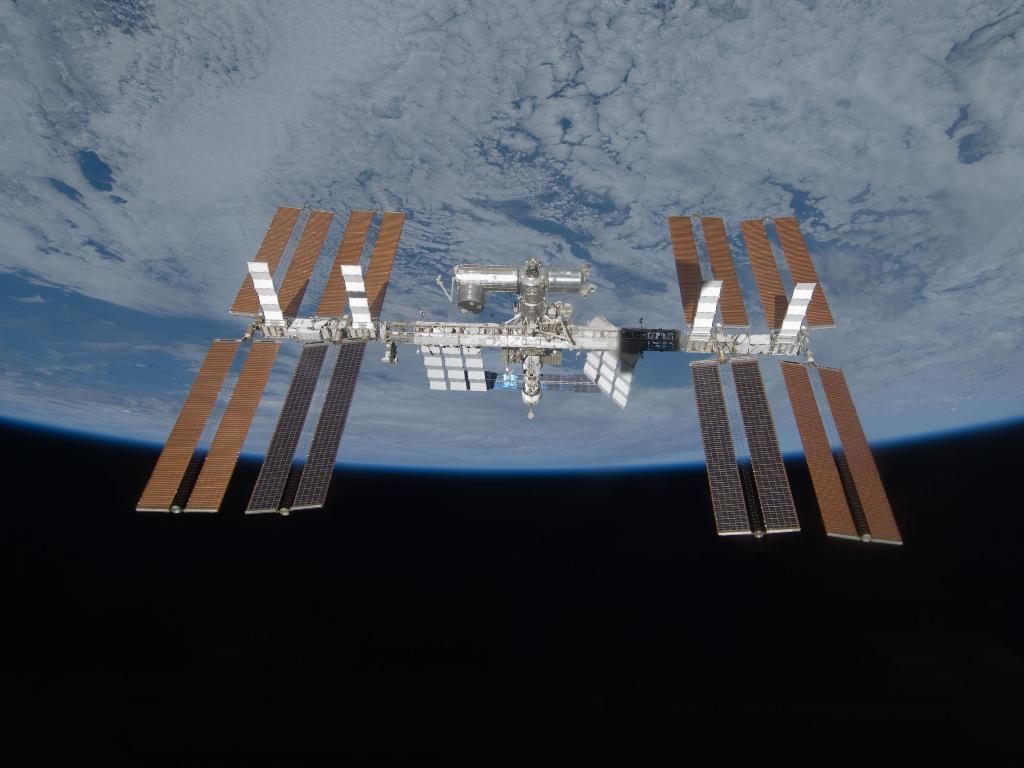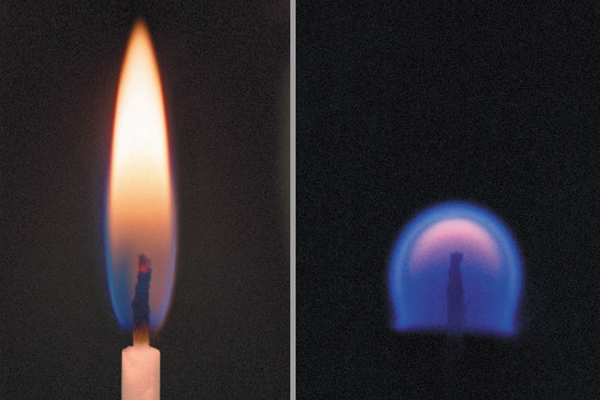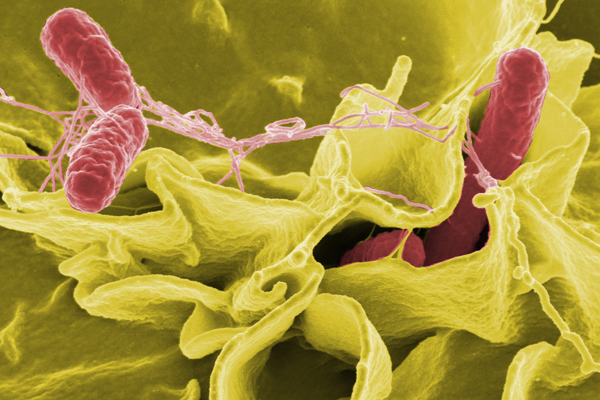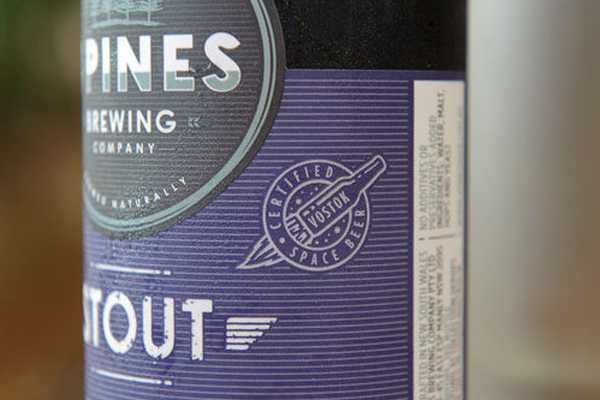How Often Do Space Time Distortions Happen
7 Everyday Things That Happen Strangely in Space
Intro

Watched pots, as they say, never boil. Besides, even if they did, why watch them? You know exactly what humid h2o looks like.
But I bet you lot don't know what information technology looks like in outer space.
Here are 7 everyday occurrences including the boiling of water that happen very differently in the microgravity environs of depression-Earth orbit, plus explanations why.
H2o boils in a big chimera

{youtube 3GG9ApFyBms}
On Earth, humid water creates thousands of tiny vapor bubbles. In infinite, though, information technology produces i giant undulating bubble.
Fluid dynamics are so circuitous that physicists didn't know for sure what would happen to boiling water in microgravity until the experiment was finally performed in 1992 aboard a space shuttle. Afterward, the physicists decided that the simpler confront of humid in space probably results from the absence of convection and buoyancy 2 phenomena caused by gravity. On Earth, these effects produce the turmoil we observe in our teapots.
Much can be learned from these boiling experiments. According to NASA Science News, "Learning how liquids boil in space will lead to more efficient cooling systems for spacecraft ... [Information technology] might too be used someday to design ability plants for infinite stations that utilise sunlight to boil a liquid to create vapor, which would then plow a turbine to produce electricity."
Flames are spheres

On Earth, flames rise. In space, they motility outward from their source in all directions. Here's why:
The closer you are to the Earth'southward surface, the more air molecules there are, thank you to the planet'due south gravity pulling them in that location. Conversely, the atmosphere gets thinner and thinner every bit you move vertically, causing a gradual turn down in pressure. The atmospheric pressure difference over a pinnacle of i inch, though slight, is enough to shape a candle flame.
That pressure difference causes an issue called natural convection. Equally the air around a flame heats up, it expands, condign less dense than the cold air surrounding it. As the hot air molecules expand outward, common cold air molecules push button dorsum against them. Because there are more common cold air molecules pushing against the hot molecules at the bottom of the flame and then at that place are at its meridian, the flame experiences less resistance at the top. And then information technology buoys upward.
When in that location'due south no gravity, though, the expanding hot air experiences equal resistance in all directions, and then it moves spherically outward from its source.
Bacteria grow more... and grow more deadly

Xxx years of experiments take shown that bacterial colonies grow much faster in space. Astro-East. coli colonies, for example, grow almost twice every bit fast as their Earth-jump counterparts. Furthermore, some bacteria grow deadlier. A controlled experiment in 2007 testing salmonella growth on the space shuttle Atlantis showed that the space environs changed the expression of 167 of the bacteria's genes. Studies performed after the flight found that these genetic tweaks made the salmonella virtually 3 times more than likely to cause disease in mice than command bacteria grown on Globe.
There are several hypotheses as to why leaner thrive in weightlessness. They may just have more room to abound than they do on Earth, where they tend to clump together at the bottom of petri dishes . Every bit for the changes in gene expression in salmonella, scientists think they may result from a stress response in a protein called Hfq, which plays a role in controlling cistron expression. Microgravity imposes mechanical stresses on bacterial cells by changing the mode liquids move over their surfaces. Hfq responds by entering a blazon of "survival mode" in which information technology makes the cells more virulent.
Past learning how salmonella responds to stress in infinite, scientists hope to learn how it might handle stressful situations on Earth. Hfq may undergo a similar stress response, for example, when salmonella is under assail by a person'southward allowed system.
You can't burp beer

Because no gravity means no buoyant strength, at that place's null pushing gas bubbles upward and out of carbonated drinks in space. This ways carbon dioxide bubbles but stagnate within sodas and beers, fifty-fifty when they're inside astronauts' bellies. Indeed, without gravity, astronauts can't burp out the gas and that makes drinking carbonated beverages extremely uncomfortable.
Luckily, a company in Australia has concocted a brew that'll be just the thing for kicking back on spaceflights. Vostok 4 Pines Stout Space Beer is rich in flavor, but weak in carbonation. A nonprofit infinite research organization chosen Astronauts4Hire is looking into whether the beer will be safe for consumption on future commercial spaceflights.
A rose past the same proper name smells... different

Flowers produce different aromatic compounds when grown in space, and as a result, smell notably different. This is because volatile oils produced by plants the oils that acquit fragrance are strongly affected past environmental factors like temperature, humidity and a bloom's historic period. Considering their effeminateness, it isn't surprising that microgravity would affect the oils' production as well.
An "out of this globe" fragrance produced by a variety of rose chosen Overnight Scentsation flown on the infinite shuttle Discovery in 1998 was after analyzed, replicated and incorporated into "Zen," a perfume sold by the Japanese company Shiseido.
Space sweat

As explained in the context of candle flames, aught yard's means at that place's no natural convection. This ways body heat doesn't ascent off skin, so the body constantly perspires in an endeavour to cool itself down. Fifty-fifty worse, because that steady stream of sweat won't drip or evaporate, information technology simply builds up. All this makes for a pretty moist journey to the beyond.
Squashed eyeballs

Weightlessness squashes astronauts' eyeballs, blurring their vision. The backs of some astronauts' optics get flattened, while others feel swelling of their optic nerves weather that result on Earth from abnormally loftier fluid pressure level in the head. It happens for similar reasons in the nil-grand environment of infinite. Without the downward pull of gravity, body fluids ride higher than they normally would, and then at that place's more than fluid than usual in the skull pressing on the eyes.
While this effect would blur the vision of most people, the nearsighted amid usa whose eyes are commonly overextended would get a vision boost from the eyeball flattening effect. The optic nerve swelling wouldn't help anyone, however, and could even crusade blindness if left untreated. Thus, eyeball problems may be a limiting factor in the duration of future missions to Mars and beyond.
Got a question? Transport us an emailThis e-mail address is existence protected from spambots. Y'all need JavaScript enabled to view information technology This e-mail accost is being protected from spambots. You need JavaScript enabled to view information technology This e-mail accost is being protected from spambots. You need JavaScript enabled to view it This electronic mail accost is being protected from spambots. You need JavaScript enabled to view it This e-mail address is being protected from spambots. Y'all demand JavaScript enabled to view it This email address is being protected from spambots. You need JavaScript enabled to view it This electronic mail address is being protected from spambots. Yous demand JavaScript enabled to view it This e-mail address is being protected from spambots. Yous need JavaScript enabled to view it This electronic mail address is being protected from spambots. You need JavaScript enabled to view information technology This e-mail address is beingness protected from spambots. Y'all need JavaScript enabled to view it This e-mail address is beingness protected from spambots. You need JavaScript enabled to view information technology This email address is being protected from spambots. You demand JavaScript enabled to view it This electronic mail address is being protected from spambots. You lot demand JavaScript enabled to view it This email accost is beingness protected from spambots. You demand JavaScript enabled to view it and we'll crevice information technology Follow Natalie Wolchover on Twitter @nattyover
How Often Do Space Time Distortions Happen,
Source: https://www.livescience.com/33091-slideshow-strange-everyday-things-space.html
Posted by: wallaceclet1940.blogspot.com


0 Response to "How Often Do Space Time Distortions Happen"
Post a Comment